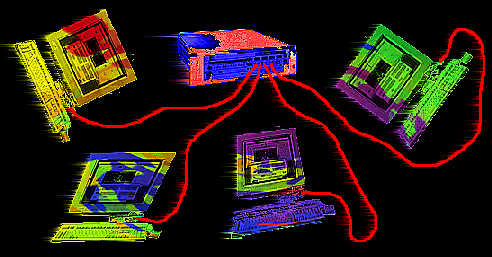 |
U-Net:A User-Level
|
| Note:
the U-Net project has pretty much would-up. If you're interested in high-performance
network interfaces, check out VIA and GigaNet. VIA is an industry standard which incorporates
almost all the ideas of U-Net. GigaNet is a company that sells adapters and switches
implementing VIA. The U-Net architecture provides low-latency and high-bandwidth communication over commodity networks for workstations and PCs. It achieves this by virtualizing the network interface such that every application can send and receive messages without operating system intervention. With U-Net, the operating system is no longer involved with the sending and receiving of messages. This allows communication protocols to be implemented at user-level where they can be integrated tightly with the application. In particular, the large buffering and copying costs found in typical in-kernel networking stacks can be avoided and feed-back to the application about flow-control and packet loss is facilitated. The key aspects of U-Net are:
U-Net is currently available on several platforms:
Also check out the Intel/Microsoft/Compaq VI Architecture which is basically an evolution of U-Net. Funding for the project is provided through a DARPA ITO contract (ONR contract N00014-92-J-1866). The initial versions of U-Net were developed under contract F30602-94-C-0224 from Rome Laboratory, Air Force Material Command. |
P a p e r s |
|
DEPARTMENT OF Last updated: 11/25/96. |